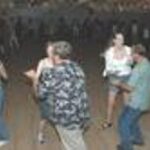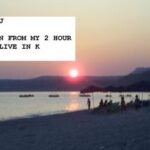Music and dance flow through every part of Aboriginal life with most forms of traditional artistic expression being related to the religious myths and beliefs. It is believed that these art forms close the time gap between past and present and draw the singers and dancers into harmony with the spirits of their ancestors.
Music and dance was originally used to help in childbirth and healing, comfort the grieving, and help the spirits of the dead depart. Indigenous music is used to teach lessons, perform ceremonies and rituals, and tell stories and record history.
As the Aborigines had no written language, literature was an oral tradition, usually in the form of sung or chanted poems or stories. The importance of recording their oral history has now been recognized as has the need to record and videotape their singing and dancing.
Aboriginal music consists mainly of singing and chanting and usually described and told of the location of land formations and water sources. Often dancers mimicked the movements of animals, such as kangaroos and emus.
Songs were usually accompanied by the rhythmic tapping and clapping of sticks or weapons and the slapping of the body and stamping of feet. Not many musical instruments were especially constructed except in the north, where they well-known didgeridoo was used, and drums were made from open-ended hollow logs and hit with hardwood beating sticks to produce a resonant, bell-like sound. Sometimes drums were made from a long hollow piece of wood with a snakeskin stretched across on end.
The didgeridoo, originally found only in the Northern Territory and Kimberley region, is a wooden trumpet or horn-like tube made from a tree trunk hollowed out by termites. Typically, it measured one to two meters long and five to ten centimeters in diameter, often with a mouthpiece of wax or hardened gum resin attached to one end. Skilled players are trained from childhood. They blow into the mouthpiece, vibrating the lips and tapping the instrument rhythmically with one hand. The droning tone of the instrument can be varied and produce short, sharp overtones.
The didgeridoo is known to different tribes by various names, such as magu, kambi and yiraga. Another song style from the Pilbara district of Western Australia incorporated the distinctive sound of the rasp. This is a notched, saw-toothed stick that produces musical tones when rubbed or scraped across by another stick. Sometimes the notched edge of a spear-thrower was scraped across with another stick.
The music of the north contained a variation, also known in the south and center of Australia, where rhythm was provided by foot stamping, beating sticks or boomerangs together or on the ground, or by clapping cupped hands on the buttocks or inside thigh. In many places on the north coast, Aboriginals blew into large seashells to make sounds.
These beating sticks were often called clap-sticks or rhythm sticks. They were short and rounded and usually twice as long as your hand or a little longer. Different sized sticks produced different sounds. Thick, long sticks made a deeper sound while a higher clicking sound was achieved from the thinner sticks.
The bull-roarer was another instrument used only for important ceremonies. If the men were having a corroboree or performing ceremonial initiation rites they often used a bull-roarer to warn people to stay away. It was made from a long, flat piece of wood with a hole in one end for a string to tie on to. The string was held in one hand and then the bull-roarer was spun round and round above your head. As the bull-roarer moved though the air, it produced a loud humming or roaring sound. The faster it moved, the louder it sounded. Some people believed the sound of the bull-roarer was the voice of the spirits.
The revival and development of indigenous Australian music has been encouraged by Aboriginal leaders and groups performing both nationally and internationally.





